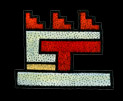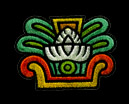Aztec and Maya Calendar
In the tonalpohualli, the sacred Aztec calendar, Monday March 4, 1957 is:
Xihuitl:
solar year


10 - Calli (house)
Xiuhpohualli:
365-day calendar
16 - Etzcualiztli (VI)
Long Count:
Mayan calendar
12.17.3.6.19
(Correlation: Alfonso Caso - Nicholson's veintena alignment [adjust])
The significance of this day
Day Quiahuitl (Rain, known as Cauac in Maya) is governed by Tonatiuh, the Sun God, as its provider of tonalli (Shadow Soul) life energy. Quiahuitl is a day of relying on the unpredictable fortunes of fate. It is a good day for traveling and learning, a bad day for business and planning.
The thirteen day period (trecena) that starts with day 1-Acatl (Reed) is ruled by Chalchihuitlicue, goddess of lakes, rivers and seas, goddess of horizontal waters. This trecena signifies the transitory nature of all that we may gain in life: it is a reminder to view success and failure, gain and loss, as matters of fate and not as matters of personal worth. The elementals do not reward nor punishment our efforts but, rather, construct the maze within which we might perfect our hearts. The 13 days of this trecena reveal our hearts to us, based on whether we have decided to live within the house of shadows or to seek the secret of happiness elsewhere. These are good days to travel to new places; bad days to hide in fear.
Aztec facts
La Malinche, or Doña Marina, was an Aztec woman who became an essential partner for Hernán Cortés in his conquest of the Aztec empire. Doña Marina's Aztec name was Malinalli, after her birthday. Cleary, she acted upon the significance of this day.



